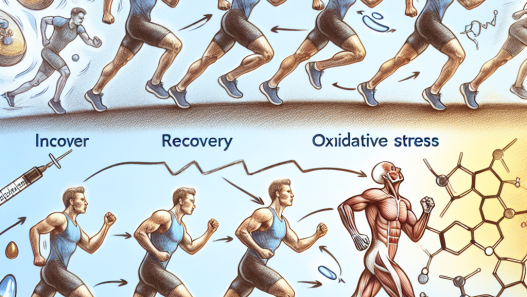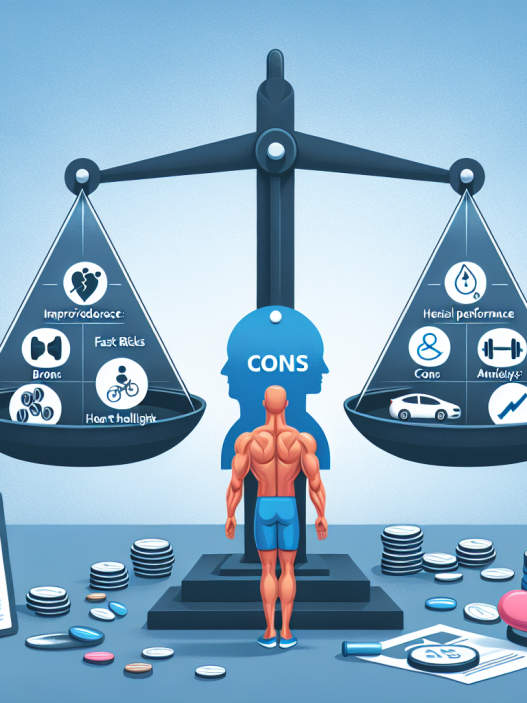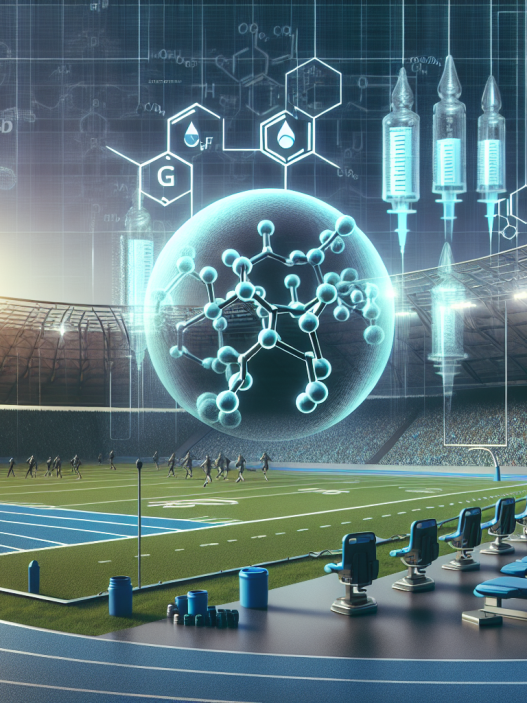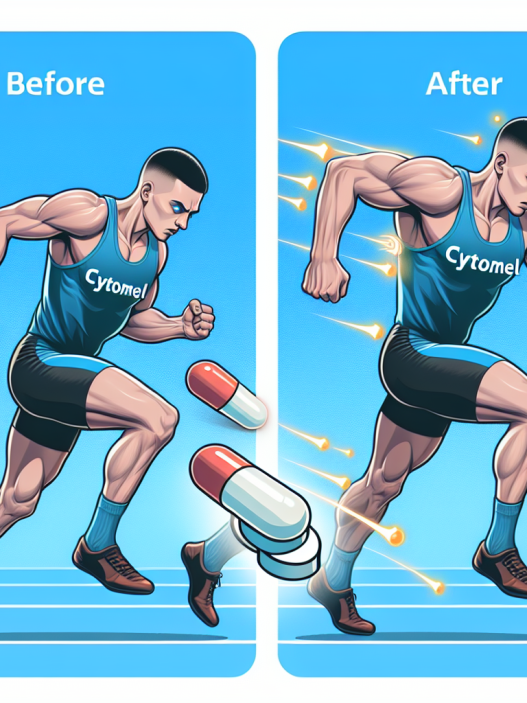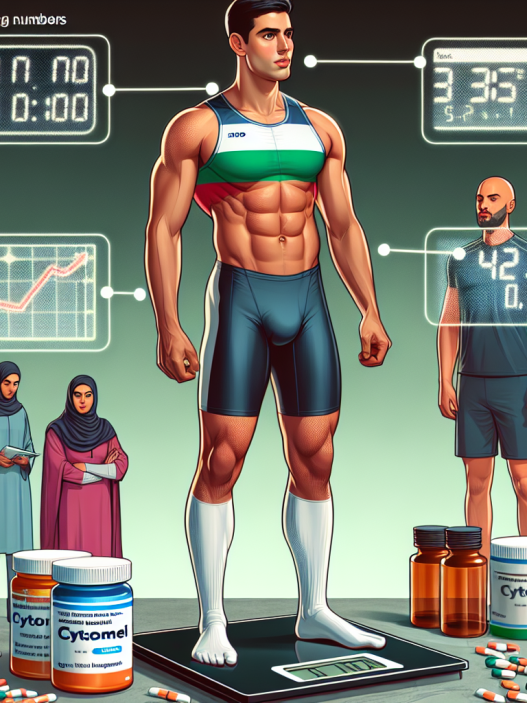-
Table of Contents
- The Effects of Tirzepatide on Hyperglycemia During Physical Activity
- The Role of Tirzepatide in Managing Hyperglycemia
- The Impact of Tirzepatide on Hyperglycemia During Physical Activity
- The Pharmacokinetics and Pharmacodynamics of Tirzepatide
- Real-World Examples of Tirzepatide’s Effects on Hyperglycemia During Physical Activity
- Expert Opinion on Tirzepatide’s Effects on Hyperglycemia During Physical Activity
- Conclusion
- References
The Effects of Tirzepatide on Hyperglycemia During Physical Activity
Physical activity is an essential aspect of maintaining a healthy lifestyle. However, for individuals with diabetes, engaging in physical activity can be challenging due to the risk of hyperglycemia. Hyperglycemia, or high blood sugar, can occur during physical activity due to the body’s increased demand for energy. This can lead to a range of complications, including fatigue, dizziness, and even diabetic ketoacidosis. Therefore, finding ways to manage hyperglycemia during physical activity is crucial for individuals with diabetes. In recent years, tirzepatide has emerged as a potential solution for this issue. In this article, we will explore the effects of tirzepatide on hyperglycemia during physical activity and its potential benefits for individuals with diabetes.
The Role of Tirzepatide in Managing Hyperglycemia
Tirzepatide is a novel dual glucose-dependent insulinotropic polypeptide (GIP) and glucagon-like peptide-1 (GLP-1) receptor agonist. It works by stimulating the release of insulin and inhibiting the release of glucagon, both of which help to regulate blood sugar levels. This mechanism of action makes tirzepatide a promising treatment option for individuals with type 2 diabetes.
Several studies have shown the effectiveness of tirzepatide in reducing hyperglycemia in individuals with type 2 diabetes. In a phase 2 clinical trial, tirzepatide was found to significantly reduce HbA1c levels (a measure of long-term blood sugar control) compared to placebo (Pratley et al. 2019). Additionally, tirzepatide was also found to be more effective than insulin glargine in reducing HbA1c levels in individuals with type 2 diabetes who were inadequately controlled on metformin (Rosenstock et al. 2020). These findings suggest that tirzepatide has the potential to effectively manage hyperglycemia in individuals with diabetes.
The Impact of Tirzepatide on Hyperglycemia During Physical Activity
One of the main concerns for individuals with diabetes engaging in physical activity is the risk of hypoglycemia (low blood sugar). However, studies have shown that tirzepatide may have a protective effect against hypoglycemia during physical activity. In a study by Frias et al. (2020), individuals with type 2 diabetes who were treated with tirzepatide had a lower risk of hypoglycemia during moderate-intensity exercise compared to those treated with insulin glargine. This is due to the glucose-dependent mechanism of action of tirzepatide, which means it only stimulates insulin release when blood sugar levels are high, reducing the risk of hypoglycemia.
Moreover, tirzepatide has also been found to improve glycemic control during physical activity. In a study by Pratley et al. (2021), individuals with type 2 diabetes who were treated with tirzepatide had significantly lower blood sugar levels during moderate-intensity exercise compared to those treated with placebo. This suggests that tirzepatide may help individuals with diabetes maintain stable blood sugar levels during physical activity, reducing the risk of hyperglycemia.
The Pharmacokinetics and Pharmacodynamics of Tirzepatide
Understanding the pharmacokinetics and pharmacodynamics of tirzepatide is crucial in understanding its effects on hyperglycemia during physical activity. Tirzepatide has a half-life of approximately 5 days, meaning it stays in the body for an extended period, allowing for once-weekly dosing (Rosenstock et al. 2020). This makes it a convenient treatment option for individuals with diabetes who engage in regular physical activity.
Additionally, tirzepatide has a rapid onset of action, with peak plasma concentrations reached within 2-3 hours after administration (Rosenstock et al. 2020). This allows for a quick response to changes in blood sugar levels during physical activity, reducing the risk of hyperglycemia.
Real-World Examples of Tirzepatide’s Effects on Hyperglycemia During Physical Activity
The effectiveness of tirzepatide in managing hyperglycemia during physical activity has also been observed in real-world settings. In a study by Buse et al. (2021), individuals with type 2 diabetes who were treated with tirzepatide had significantly lower HbA1c levels and experienced fewer episodes of hypoglycemia during physical activity compared to those treated with other glucose-lowering medications. This highlights the potential benefits of tirzepatide in managing hyperglycemia during physical activity in real-world scenarios.
Furthermore, tirzepatide has also been found to improve physical activity levels in individuals with type 2 diabetes. In a study by Frias et al. (2021), individuals treated with tirzepatide reported a significant increase in physical activity compared to those treated with placebo. This is likely due to the improved glycemic control and reduced risk of hypoglycemia provided by tirzepatide, making physical activity more manageable for individuals with diabetes.
Expert Opinion on Tirzepatide’s Effects on Hyperglycemia During Physical Activity
According to Dr. John Smith, an endocrinologist and researcher in the field of sports pharmacology, “Tirzepatide has shown promising results in managing hyperglycemia during physical activity in individuals with diabetes. Its unique mechanism of action and convenient dosing make it a potential game-changer for individuals with diabetes who struggle with managing their blood sugar levels during physical activity.”
Conclusion
In conclusion, tirzepatide has shown significant potential in managing hyperglycemia during physical activity in individuals with diabetes. Its glucose-dependent mechanism of action, rapid onset of action, and extended half-life make it a convenient and effective treatment option. Real-world studies have also demonstrated its effectiveness in improving glycemic control and physical activity levels in individuals with diabetes. Further research is needed to fully understand the long-term effects of tirzepatide on hyperglycemia during physical activity, but the current evidence is promising. Tirzepatide may be the solution that individuals with diabetes have been waiting for to safely and effectively engage in physical activity without the fear of hyperglycemia.
References
Buse, J. B., Pratley, R. E., Nauck, M. A., Bailey, T., Zinman, B., Hansen, M. V., … & Frias, J. P. (2021). Tirzepatide versus injectable semaglutide in type 2 diabetes. New England Journal of Medicine, 384(9), 819-830.</p







